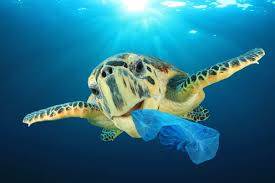
13 billion rupees have to be lost annually due to plastic pollution, situation worse by 2050
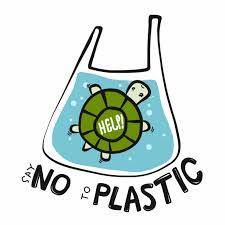
Chemicals discharging from plastic pollution are damaging those bacteria present in the ocean, which produce oxygen up to 10 percent. The exposure of chemicals discharge by plastic pollution is blocking the growth of these micro-organisms, affecting the gene cycle. Researchers at Macquarie University in Australia have claimed this in a study. This is the first study of its kind, which attempts to find out how the chemicals emitted by plastic pollution affect the life of our oceans, photosynthetic (food manufacturers in sunlight) marine organisms.
Sasha Tetu, lead author of the research published in the journal Communication Biology, said, ‘In the study, we found that exposure to chemicals emitted by plastic pollution affected the growth of groups of bacteria (Prochlorococcus), which reduced the production of oxygen. Is coming According to Tetu, these bacteria are considered to be the most photosynthetic in the ocean. ‘
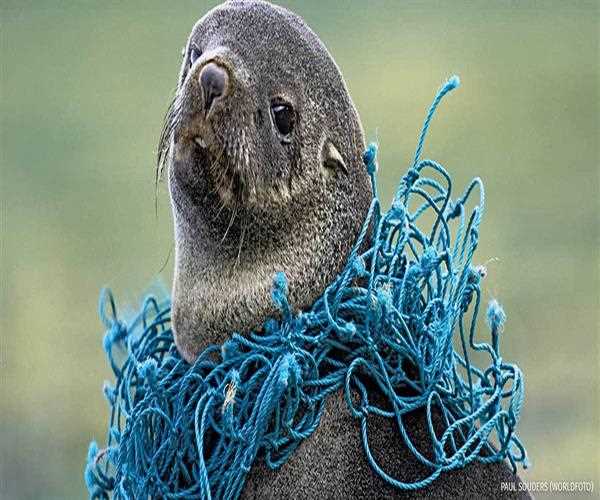
He said that now we want to find out whether plastic pollution is having the same effect on these marine organisms. He points out that the research team in the lab has uncovered the effects of chemicals emanating from common plastic products in Prochlorococcus found at varying depths in the ocean. University researcher Lore Moore said that this pollution can percolate into the marine atmosphere and cover a wide variety of chemical substances, but because of this the risk of animals trapped in plastic debris is relatively low.
This microbe is very important
These small microorganisms are extremely important for marine food chains. These organisms produce 10 percent of the total global oxygen, with contributions to carbon cycling. This means that one in ten breaths should be thanked for these microbes, but how much damage is this bacteria causing to human pollutants.
What is Prochlorococcus bacteria

The group of green microorganisms is called Prochlorococcus. It is the most photosynthetic organism. Through photosynthesis, these organisms produce carbohydrates and oxygen in the sea.
World Environment Day This ‘World Environment Day’ is special for us because it is hosted on the shoulders of India this time. This year’s theme is based on the Beat Plastic Pollution. The basic objective of this theme is to reduce the use of single used plastic which is the root cause of plastic waste deposition on the sea surface. This host provided by the United Nations has many meanings such as India’s increasing access to the world on environmental issues, increasing use of plastics in the country and India’s growing stature in recycling of single-use plastics, etc.
Before coming to this year’s theme, it would be meaningless to discuss the initiative taken by India to enrich the environment globally. The only head of state to leave there except Indira Gandhi, the Prime Minister of the host nation, was Indira Gandhi at the first environmental conference held in Switzerland on 5 June 1972 by the United Nations and this conference became the foundation of World Environment Day. Indira Gandhi’s visit to the conference reflects India’s awareness on environmental issues.
Let us now talk about the Beat Plastic Pollution theme. Do you know that every year 13 million tons of plastic are depositing on the sea surface. This figure is so large that if plastic waste continues to spread in the sea at the same pace, then within a few years it will reach the middle. According to statistics released by the United Nations, one truck per minute of plastic waste is dumped into the sea, 50 percent of which is single-use plastic.
These waste accumulating in the sea surface are having an impact on the ecology of the sea. Plastic is not biodegradable, so it exists for thousands of years without changing its condition. Due to the salinity of the seawater, it is divided into small pieces which are easily ingested by fish or other sea creatures. Research suggests that this plastic ingested by marine organisms affects their fertility as well as reduces their life expectancy.
Plastic waste is also fatal for various types of algae that grow on the sea surface. It obstructs the sun’s rays which play an important role in the growth of algae. Since, an integral part of the human diet is found in marine organisms and other types of marine products, it cannot escape the harmful effects of plastic. This shows how important it is to prevent plastic waste from accumulating on the ocean surface. According to the United Nations Environment Program (UNEP), marine pollution is causing a loss of US $ 13 billion annually.
Statistics released globally show that between 2002 and 2016, there has been an increase of 135 million metric tons in the production of plastic in the world. Plastic production in the year 2002 was 200 million metric tons, which increased to 335 million metric tons in 2016. China alone produces more than 23 percent of the world’s total plastic production. Thus, China is the world’s largest producer of plastics.
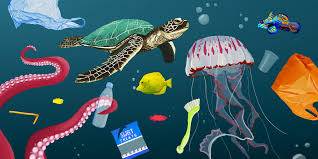
India ranks far behind China in plastic production. But the figures released by FICCI show that India has been growing at a rate of 16 percent per year in plastic production for the last few years. Or simply say that India is moving towards joining the ranks of the leading plastic producing nations in the world. Not only this, to meet the growing demand for plastic goods in the country, India also has to import it in large quantities from China every year.
The current trend of plastic consumption in the country shows that 24 per cent of the total plastic consumption is used for packaging. At the same time, 23 percent share in the manufacture of essential goods or equipment in the agricultural sector, 16 percent in the manufacture of electronic goods, 10 percent in the manufacture of household goods, 8 percent in the construction sector, 4 percent in transport, one percent in furniture and 14 percent share is used in the construction of other essential things.It is clear from the data given above that the maximum consumption of plastic is in the packaging sector. The packaging of water, other beverages, foodstuffs, cosmetics, etc. Is entirely dependent on ‘Polyethylene Terephthalate’ which is a single-use plastic. The use of stomach plastic is increasing rapidly not only in India but throughout the world, due to which it is increasing rapidly in the sea level.
According to the World Economic Forum, if the use of plastic is not reduced, by 2050, more plastic will be filled in the sea than fish. However, the use of plastic per capita per year is much lower in India than in the world. In India, this figure is only 11 kg, whereas in the world it is 28 kg. But given the large size of India’s population, this figure becomes quite large. Not only this, India is also second in terms of population settling in seaside areas.
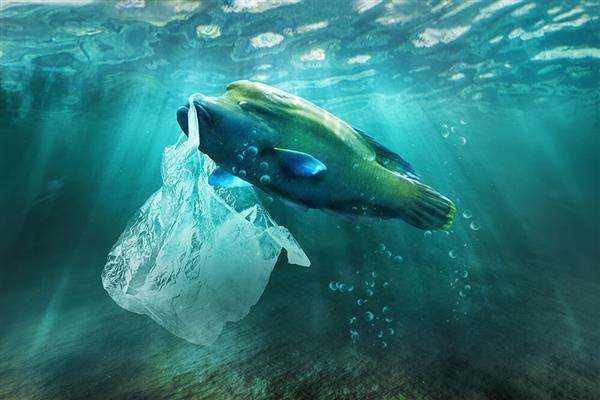
In India, a total of 18.75 crore people live in the coastal region while in China it is 26.29 crores. It is clear that India’s contribution to marine waste is no less. The entire India produces 56 lakh metric tonnes of plastic waste every year, a large part of which goes to the sea through rivers and streams. Therefore, India also needs to be aware of this problem.
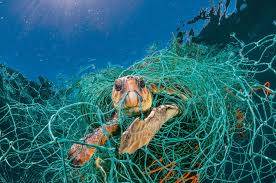
The growing plastic deposits in the sea have attracted the attention of the entire world towards the management of plastic waste. Many leading countries of the world including several US states have started to ban single-use plastic sequentially. India has also started efforts in this direction, but there is no concrete rule here. As a rule, the use of polythene of thickness less than 50 microns is banned, but this is proving insufficient. France is the first country in the world which has decided to ban all such use completely by 2025, with a ban on single-use plastics in 2016. Uganda had completely banned the use of plastic bags in 2008.
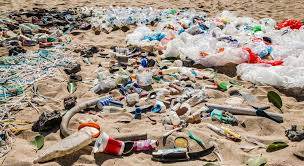
Japan, many countries in Europe, America and India etc. Have started stressing on recycling of pet plastic to deal with this problem. India has made significant progress in this direction. According to the report released last year by the Central Pollution Board, India recycling 90 percent of the total single-use plastic produced annually in the country, which is the highest in the world. According to the Central Pollution Board, 65 percent of the total single-use plastic is recycled by registered companies, 15 percent by the unorganized sector and 10 domestic industry-related firms. In Japan, this percentage of recycling is 72, 43 in Europe and 31 per cent in the US.
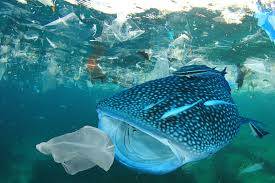
One of the major reasons that India received for World Environment Day 2018 is its ability to recycle plastic. Announcing the hosting in February this year, Eric Solheim, Head of the Under Secretary cum Environmental Branch of the United Nations, praised India’s ability to recycle single-use plastics. Therefore, it would not be wrong to say that India should take full advantage of this opportunity and play a leading role in keeping the ocean ecology intact.
